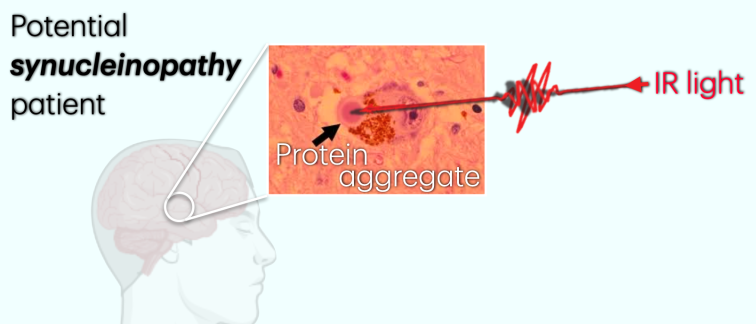In Parkinson’s and related synucleinopathies, aggregation of alpha-synuclein (aSyn) is related to diverse clinical and pathological outcomes, making diagnosis and treatment very challenging. Biophysicist Roeters specializes in infrared-based vibrational spectroscopy, developing label-free methods to study aSyn aggregation. His goal is to enable early detection, patient stratification, and to obtain detailed insights into the structure, formation, and spread of aggregates.
Roeters will apply antibody- and plasmonically-enhanced two-dimensional infrared (2DIR) spectroscopy to biofluids and post-mortem brain homogenates, as well as optical-photothermal infrared (OPTIR) microscopy on post-mortem brain slices from patients and controls. The high amyloid sensitivity of 2DIR allows for early detection of disease progression and structural diversity of aggregates across various diseases and disease stages. Furthermore, combining OPTIR microscopy with immunohistochemistry, Roeters wants to unravel the molecular and structural composition of aggregates, their disease state dependency, and spreading mechanisms.

By developing these innovative approaches, Roeters and his colleagues aim to advance early detection methods and uncover disease mechanisms in Parkinson’s and related diseases like dementia with Lewy bodies (DLB), multiple system atrophy (MSA), and in patients with mixed Alzheimer’s and Parkinson’s pathology. This could significantly aid in stratifying patients for clinical trials targeting aSyn aggregation, ultimately contributing to better treatments and potentially curing or delaying disease progression.

